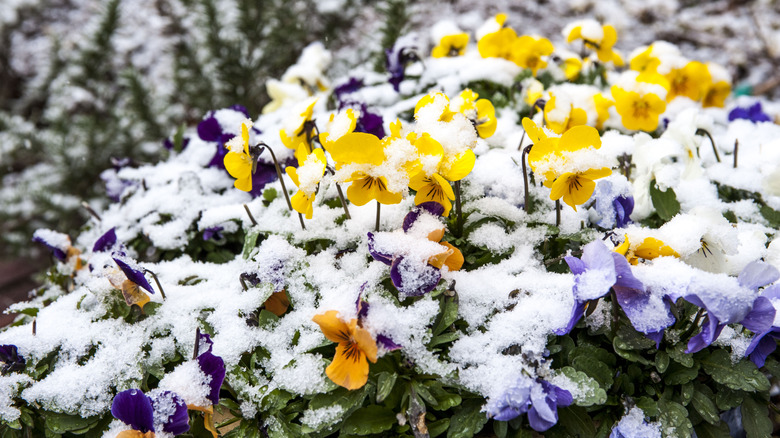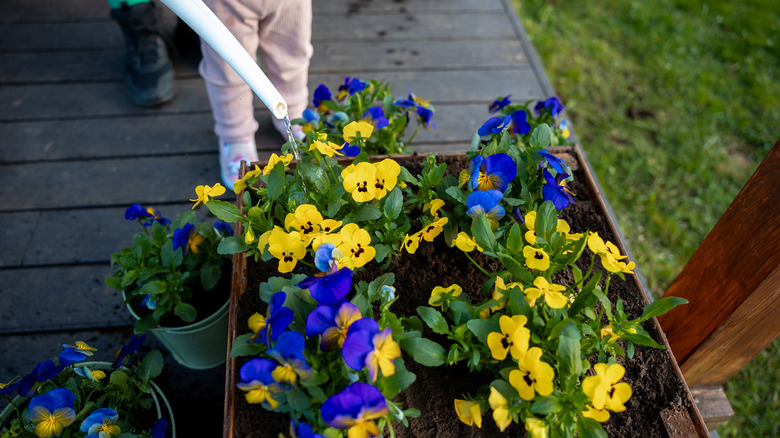How To Prepare Pansies For Winter
Pansies (Viola x wittrockiana) are a fantastic cold-season annual. These flowers bloom through winter, livening up an otherwise dreary yard with their bright petals and foliage. In USDA Hardiness Zones 7 and higher, pansies can be planted in the fall for beautiful blooms throughout the winter and early spring, and may even last several years as a short-lived perennial. Those in zones 6 and lower can still enjoy pansies as annuals, but should plant them in early spring, when the soil temperature is between 45 and 65 degrees Fahrenheit.
Although tough, pansies do need a little attention to really thrive during the colder months. To keep them happy and blooming during winter, there are a few things you need to do. Firstly, make sure that they are in a location where they can thrive. These annuals don't do well when too soggy, so well-draining soil is essential. Raised beds are a great place for pansies, as they usually have decent drainage. They also must be placed in either partial shade or full sun.
You should mulch around your pansies to prepare them for winter and protect the plants from frost. Cold snaps can cause pansies to wilt and go a green-gray color, and mulch will help them conserve warmth and moisture. Shredded pine bark will do well and can look nice as a backdrop against the beautiful foliage and flowers of the pansies. If an extreme cold snap is forecast, 2 to 4 inches of pine straw on the top of the soil is a great way to provide your pansies with protection. This can be removed once the cold weather is over.
How to look after pansies over winter
To keep your pansies healthy and blooming over winter, fertilize them once a month. Either a slow-release fertilizer or a general all-purpose water soluble fertilizer can be used, as long as you apply it lightly and follow the instructions on the packet. Deadheading regularly will promote new blooms on your pansies, so pinch off any flowers that have turned. You should also remove any flowers that have been damaged by frost throughout the season.
You should keep an eye on watering over the winter months. If you have had less than an inch of rainwater in a week over the winter months, give your pansies a watering. Do any watering in the mornings, as this means the foliage can dry off before nightfall. However, overwatering can cause diseases, so you should always be careful and watch out for signs of crown or root rot.
Pansies are fantastic, fast-growing flowers you can plant in October and November to liven up your winter garden. By keeping on top of watering, fertilizing, and deadheading, your pansies will be there to cheer you up until spring comes again.

